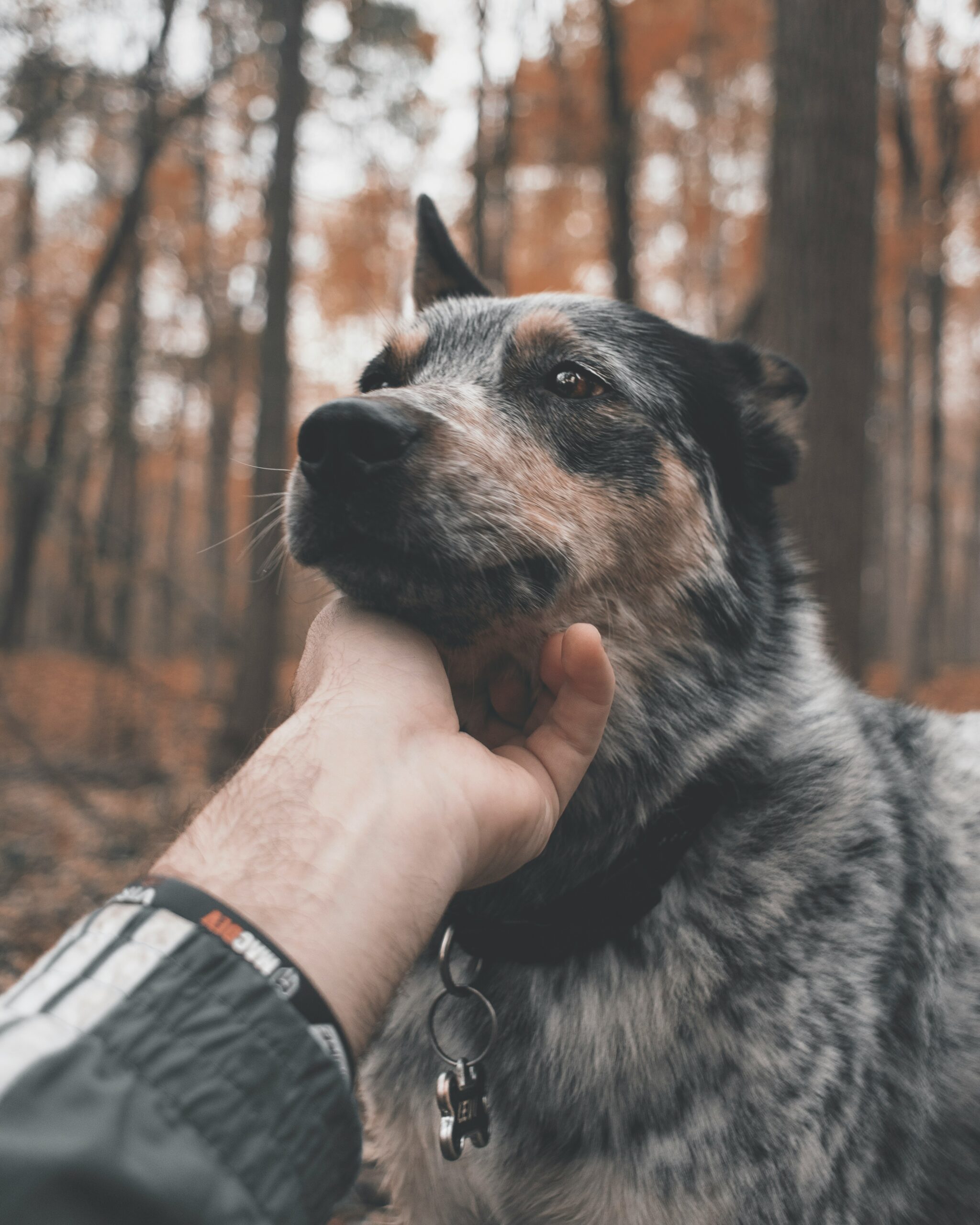Heeler dogs are a captivating breed known for their incredible energy and intelligence. Originating from Australia, these dogs are not only skilled herders but also loyal companions. Their unique physical characteristics and vibrant personality traits make them a favorite for active families. Moreover, understanding their temperament and training needs is essential for creating a harmonious relationship. In this in-depth look at the Heeler dog breed, we’ll explore everything from their historical background to health considerations, ensuring you’re well-equipped to welcome one into your home. Don’t miss the chance to discover all that makes these remarkable dogs so special!
Origin and History of Heeler Dogs
The Heeler Dog breed, renowned for its intelligence and energy, boasts a fascinating origin. Primarily developed in Australia during the late 19th century, Heelers emerged as working dogs to aid ranchers in herding cattle. Their ancestry can be traced back to several breeds, including the:
- Dingo: Indigenous to Australia, providing endurance and herding instincts.
- Collie: Contributing intelligence and agility.
- Bull Terrier: Adding strength and tenacity.
Key Historical Timeline:
- 1800s: Ranchers needed a versatile herding dog, leading to the blue heeler and red heeler varieties.
- 1900: The Australian Cattle Dog (another name for the Heeler Dog) received formal recognition.
This rich history highlights Heeler Dogs as not just pets but essential companions to farmers and ranchers, shaping their robust and energetic nature. Their loyal temperament stems from generations of being closely allied with humans, making them exceptional working and family dogs. Therefore, understanding the background of your Heeler Dog enriches the experience of raising one and enhancing their remarkable traits.
Physical Characteristics of Heeler Dogs
Heeler Dogs exhibit a fascinating blend of strength, agility, and unique features that set them apart. Here’s what to look for:
- Size: Typically, Heelers stand between 17 to 20 inches tall.
- Weight: They weigh around 35 to 50 pounds, making them medium-sized yet sturdy.
- Coat: Heeler Dogs possess a short, dense coat that’s resistant to weather conditions. Their coats come in various colors, including:
- Blue
- Red
- Speckled
- Ears: They have striking, erect ears that enhance their expressive faces.
- Eyes: Their oval-shaped eyes, often blue or brown, exude intelligence and alertness.
Comparison of Heeler Variants
| Feature | Blue Heeler | Red Heeler |
|---|---|---|
| Coat Color | Blue speckled | Red speckled |
| Temperament | Energetic and loyal | Friendly and gentle |
| Best for | Active families | Families with kids |
In summary, the physical attributes of a Heeler Dog not only demonstrate their active nature but also contribute to their adaptability across various roles, from family pet to working partner. Make no mistake; choosing a Heeler means embracing a vibrant companion that embodies both charm and functionality.
Temperament and Personality Traits
The Heeler Dog boasts a vibrant personality that makes it both a joy and a challenge to own. These dogs exhibit traits that stem from their herding lineage:
- Intelligence: Heeler Dogs are incredibly smart, often learning commands and tricks quickly. Their sharp minds require continuous stimulation.
- Energetic: With a boundless supply of energy, Heeler Dogs thrive on activity. They need regular exercise, or they may become bored and destructive.
- Affectionate: Despite their working background, these dogs form strong bonds with their families. They are loyal companions who enjoy being involved in family activities.
- Protective: Heeler Dogs have an instinct to protect their territory and loved ones. This makes them excellent watchdogs.
Comparison of Temperament
| Trait | Heeler Dog | Other Breeds |
|---|---|---|
| Intelligence | High | Varies |
| Energy Level | Very High | Moderate to High |
| Affection Level | Strong | Varies |
| Protective Instinct | Strong | Varies |
In summary, understanding the temperament and personality traits of a Heeler Dog is essential for any potential owner. These characteristics influence not just your dog’s behavior but also its training and lifestyle needs.
Training and Socialization Tips
Training a Heeler Dog is essential, given their intelligence and energy. These dogs thrive in an environment where they can learn and engage. To effectively train your Heeler, consider the following tips:
- Start Early: Begin obedience training and socialization when your Heeler is a puppy. Early exposure to various environments, people, and other animals fosters a well-rounded adult dog.
- Use Positive Reinforcement: Heeler Dogs respond best to reward-based training. Use treats, praise, or playtime as incentives to encourage good behavior.
- Be Consistent: Establish a routine. Consistency in commands and expectations is key to avoiding confusion, leading to a well-behaved Heeler.
- Engage Their Mind: Heeler Dogs are highly intelligent. Incorporate puzzle toys and tricks into training sessions to keep their minds stimulated.
- Socialization Is Key: Expose your Heeler to different situations gradually. Socializing helps reduce anxiety and promotes sociable behavior.
In conclusion, by providing structured training and ample socialization, your Heeler Dog will not only be obedient but also a joyful companion that fits seamlessly into your family. Keep these tips in mind for the best results!
Health Considerations and Lifespan
Maintaining the health of your Heeler Dog is crucial for ensuring a long and happy life. Typically, these dogs enjoy a lifespan of 12 to 15 years, but they do face specific health challenges. Here’s what you need to know:
- Common Health Issues
- Hip Dysplasia: A genetic condition that affects joint health.
- Progressive Retinal Atrophy (PRA): A degenerative eye disorder that can lead to blindness.
- Deafness: Commonly seen in the breed, often congenital.
- Regular Check-Ups
- Schedule annual vet visits for vaccinations, dental care, and overall health assessments.
- Balanced Diet
- Feed your Heeler Dog high-quality dog food tailored to their age and activity level.
- Monitor their weight to prevent obesity-related health issues.
- Exercise Needs
- A well-exercised Heeler leads to fewer behavioral issues and better health, reducing the risk of problems like arthritis.
By being proactive about these health considerations, you can significantly enhance your Heeler Dog’s quality of life and lifespan. Remember, a happy Heeler is a healthy Heeler!
Active Lifestyle Requirements
Heeler Dogs thrive in dynamic environments that cater to their energetic nature. This breed requires regular physical and mental stimulation to stay happy and healthy. Here’s what you need to keep in mind:
- Daily Exercise: Aim for at least 1 to 2 hours of exercise each day. Activities like:
- Walking
- Running
- Playing fetch
- Mental Engagement: Use puzzle toys or training sessions to challenge their intellect. Heeler Dogs are incredibly smart and need mental tasks to prevent boredom.
Activity Comparison Table
| Activity Type | Ideal for Heeler Dog | Duration |
|---|---|---|
| Walks | Yes | 30 minutes daily |
| Jogging | Yes | 1 hour, 3x a week |
| Agility Training | Yes | 20-30 minutes |
| Fetch | Yes | 30 minutes |
In summary, an active lifestyle is essential for your Heeler Dog. Without enough activity, they can become restless or destructive. Therefore, prioritize their exercise and keep them engaged for a happy and balanced life.
Choosing the Right Heeler for Your Family
When selecting a Heeler Dog, consider your lifestyle and family dynamics. This breed thrives in active environments, but not all Heelers are created equal. Here are key factors to guide your decision:
- Energy Levels: Heelers are highly energetic. Ensure your family can commit to daily exercise.
- Temperament:
- Some Heelers are more sociable, while others may be reserved.
- Assess each dog’s temperament to find a compatible match.
- Size Considerations:
Breed Variation Size Ideal Living Space Australian Cattle Dog 35-50 lbs Active homes (yard preferred) American Cattle Dog 40-65 lbs Spacious environments - Children and Other Pets: Heelers can be great with kids but need proper socialization. If you have small children or pets, look for a Heeler with a gentler nature.
Choosing the right Heeler Dog involves understanding these traits and ensuring the dog’s energy and temperament mesh well with your family. Make informed decisions for a harmonious life together!
Choosing the Right Heeler for Your Family
Selecting the perfect Heeler Dog for your family demands careful consideration. This energetic breed has specific needs and characteristics that suit certain lifestyles. So, let’s break down key factors to keep in mind:
Considerations for Choosing a Heeler Dog:
- Energy Level: Heeler Dogs thrive on physical activity. Ensure your family can dedicate time for daily walks, runs, or playtime.
- Size: Heelers typically range from 30 to 50 pounds. Determine if your living space can accommodate a mid-sized dog comfortably.
- Age: Puppies require extensive training and socialization. Adult Heelers may already possess basic obedience skills.
- Temperament: Heelers are intelligent and protective. If your family has young children, choose a well-socialized dog to ensure harmony.
- Activity Compatibility: Match the Heeler’s activity needs with your family’s lifestyle. An active family will align well with the Heeler Dog’s energetic disposition.
Extra Tips:
- Research Breeders or Rescues: Look for reputable sources that prioritize the health and temperament of their dogs.
- Meet the Dog First: Spend time with potential candidates to ensure compatibility with your family’s dynamic.
By carefully assessing these aspects, you can find a Heeler Dog that fits seamlessly into your family life.
Frequently Asked Questions
What are the key characteristics of Heeler dogs?
Heeler dogs, or Australian Cattle Dogs, are renowned for their intelligence and high energy levels. They are medium-sized, muscular dogs with short, dense coats that often come in mottled blue or red. This breed is known for its agility, loyalty, and protective instincts. Heelers are excellent herders and require extensive physical and mental stimulation to thrive. Their working dog mentality means they are always eager to learn and engage in activities.
How should I train a Heeler dog effectively?
Training a Heeler dog demands consistency, patience, and positive reinforcement. Given their intelligence, they learn commands quickly but can exhibit stubbornness if not engaged properly. Start with basic obedience training, using treats and praise to reinforce desired behaviors. Incorporate activities that challenge them mentally, such as agility training or herding exercises. Regular socialization with other pets and people is essential to curb any potential behavioral issues as they can be wary of strangers.
What kind of exercise does a Heeler dog need?
Heeler dogs require a significant amount of exercise daily—at least one to two hours of vigorous activity. They thrive on tasks that engage both their physical and mental capacities. Activities such as running, hiking, playing fetch, or participating in agility courses are ideal. Without sufficient exercise, they may become bored or develop undesirable behaviors. Providing opportunities for interactive play and challenges will help satisfy their energetic nature and keep them happy.
Are Heeler dogs good family pets?
Yes, Heeler dogs can be excellent family pets when trained and socialized properly. They are known for their loyalty and protective nature, making them good guardians. These dogs are generally good with children and can form strong bonds with family members. However, their high energy levels and herding instinct mean they benefit from an active household. Families who engage in outdoor activities and are committed to providing training and socialization will find Heelers to be loving and playful companions.



